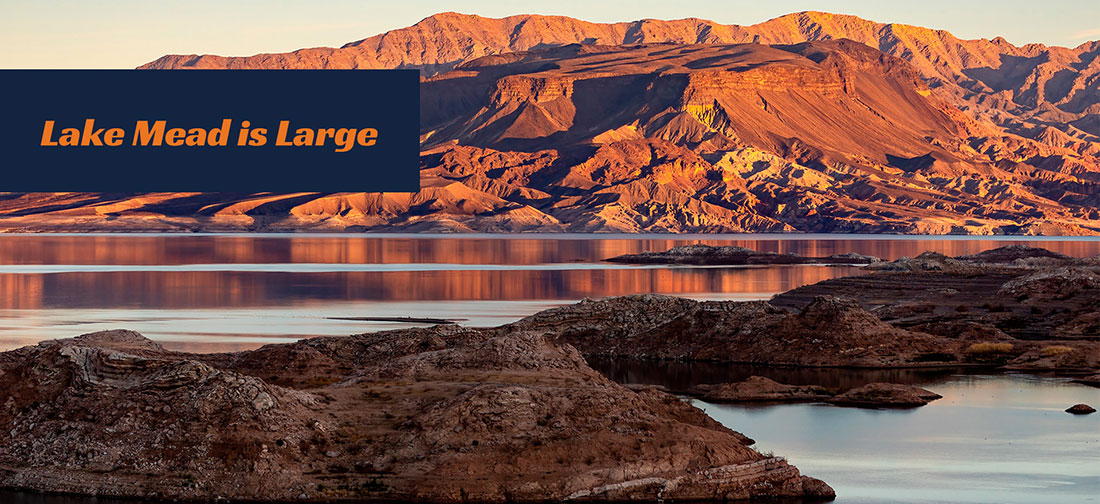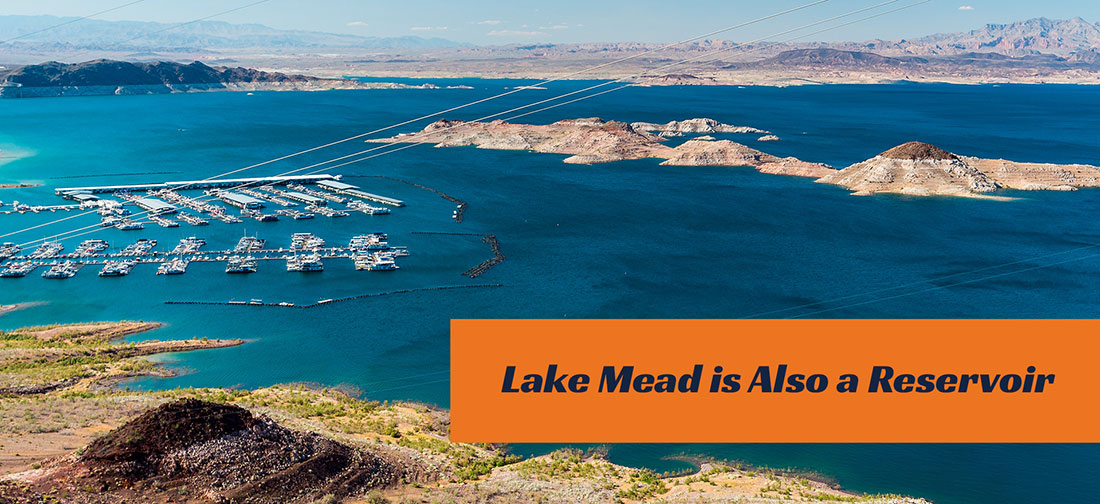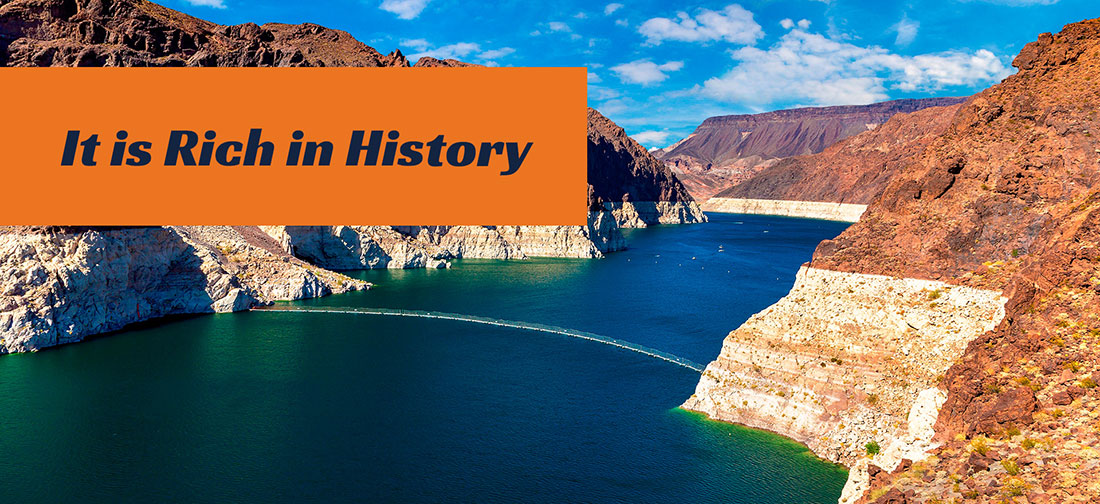Facts About Lake Mead in Nevada
Although downtown Las Vegas is the epicenter of parties and nightlife, many tranquil and majestic natural areas are outside the city’s limits. One of the most fantastic attractions for nature lovers in the area is Lake Mead. The Lake Mead National Recreation Area is less than an hour from The Strip. It is a top destination for Las Vegas kayaking and other outdoor activities in Las Vegas, and it is full of fun facts that will make you appreciate it even more.
Lake Mead is Manmade
Unlike many lakes and other large bodies of water, Lake Mead is not a natural lake. Lake Mead was created at the same time as the Hoover Dam. Initially, the lake was established so that it could provide a source of water for the region. Lake Mead was formed when the water flow from the Colorado River was slowed down. The Colorado River used to have more water than it now due to the wetter and cooler environment that characterized the area. When the river’s water supply started dwindling, retaining sufficient water to support the area’s growing population became increasingly essential.
Lake Mead is a Large
You might not think there are large lakes in the desert, but Lake Mead and the entire Lake Mead Recreation Area are quite large. Along with Lake Mead, the Lake Mead Recreation Area includes Las Vegas Bay, Lake Mohave, and surrounding lands. In total, the Lake Mead Recreation Area spans 1.5 million acres. In addition to its sheer size, the recreation area spans the borders of two states. If you decide to kayak Las Vegas with Blazin’ Paddles, you can cross back and forth between Arizona and Nevada multiple times.

It’s a Destination for Scuba Diving
While many people head off to the Caribbean or tropical locales for scuba diving, Lake Mead is also where you can scuba dive. The lake has been ranked as one of the top freshwater lakes in the country for scuba diving, and it’s one of the most unique Las Vegas activities you can enjoy. You can dive to multiple depths, and Lake Mead has submerged sites for divers to explore. One of the most intriguing sites for divers is the B-29 Superfortress, a bomber that dates back to World War II. If you plan on diving into the bomber, remember that you will need to join a guided tour.
It is a Popular Place for Boaters
Water sports are not the first thing you should consider when considering Las Vegas attractions. However, the Las Vegas Bay Marina is a mecca for boaters in the region. Along with offering boaters a place to dock, the marina offers various restaurants with varied dining options. If you’d prefer to take a backseat while someone else drives the boat, consider going on a paddle wheeler, such as those you see on the Mississippi River, with various sightseeing and dinner packages. If you’d like to camp out on the water and spend a few days exploring the area, you can also rent houseboats for an extended stay in the Las Vegas Bay Marina.
Lake Mead is Also a Reservoir
Lake Mead is technically a lake but doubles as a reservoir. Lake Mead is officially a recreation area and a national park. However, it was created mainly to supply visitors and citizens of Las Vegas and the surrounding areas with a sufficient water supply. Most of the water you find in Lake Mead comes from other places, including the Rockies in Colorado, Utah, and Wyoming. The water that you find in Lake Mead first flows through the Colorado River and eventually reaches the lake. Along with the water that flows from the Rockies, the water levels in the Colorado River are influenced by the volume of snowfall those areas have received in the past year. Although water levels in Lake Mead may fluctuate from one year to the next, the lake has never run dry, even in a drought.

Environmental Diversity
While you might think of Lake Mead and the Southwest as just a desert climate, there is quite a bit of environmental diversity in the Lake Mead Recreation Area. Overton Arm, in the northern part of Lake Mead, is home to bald eagles, especially during the winter. The Boulder Basin is a spectacular natural area that tends to be visited frequently due to its proximity to Henderson and Las Vegas.
It is Rich in History
Lake Mead and Nevada, in general, are steeped in natural and human history. Nevada became a state in 1864. Just one year later, its population expanded tremendously due to pioneers who settled in the area. The pioneers who first moved to the area established a town called St. Thomas, which they built along the Colorado River. By the late 1930s, St. Thomas was abandoned. Over time, the town was submerged in Lake Mead. Today, the remnants of St. Thomas have been recovered from the lake. They are a popular tourist attraction and draw many visitors to the area each year.

All in a Name
Most might not know the answer if you ask people how Lake Mead got its name. Lake Mead was named after Elwood Mead, the former U.S. Bureau of Reclamation commissioner. In honor of the commissioner, the lake was called Lake Mead. Its former name was eventually changed to the Lake Mead National Recreation Area. Along with Lake Mead, the recreation area was expanded to include Lake Mohave and the Shivwits Plateau. The land in the recreation area was reclaimed between 1924 and 1936 in light of the Boulder Canyon Project. The lake and dam were also created at the same time.
Camping and Hiking
As one of the most popular outdoor areas in the Southwest, it may not be much of a shock that the Lake Mead Recreation Area is also an excellent spot for camping, hiking, and kayaking in Vegas. Along with spectacular hiking trails, the recreation area also has essential facilities such as picnic tables, restrooms, and water for visitors. Camping is also an option, and camping spots are available for individual and group campers. In total, the lake has nine distinct areas, and each one has its amenities and personality. The Black Canyon region, for instance, is full of archaeological wonders. The Eldorado region of the canyon has steep mountains and rugged cliffs. The Eldorado region is located close to the Colorado River. Another region is Ireteba Peaks. This area is rife with valleys and sedimentary deposits. It is also home to the desert tortoise, a threatened species.
Human and Animal History
Lake Mead and the surrounding area were originally home to Native Americans and many unique animals. Native Americans lived in and around Lake Mead approximately 8,000 – 10,000 years ago, according to archaeological estimates. Lake Mead originally had a cooler and wetter climate than it does presently, which helped support the Native Americans’ lifestyle. Along with the Native American inhabitants, archaeologists have also discovered remains of large animals in the area, including mountain sheep, sloths, horses, and camels, which provided sustenance for the Native Americans who lived there.
Contact Blazin’ Paddles today for more information on kayaking in Vegas and all the great outdoor spots to explore.

